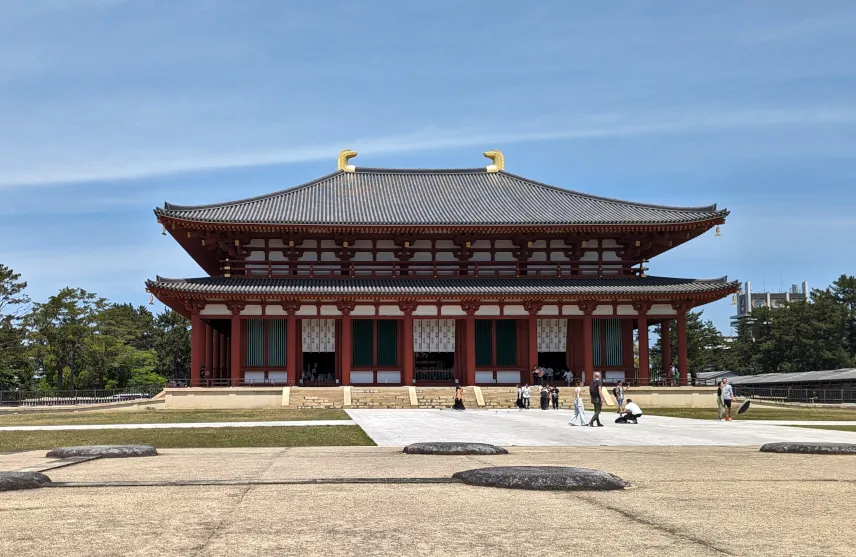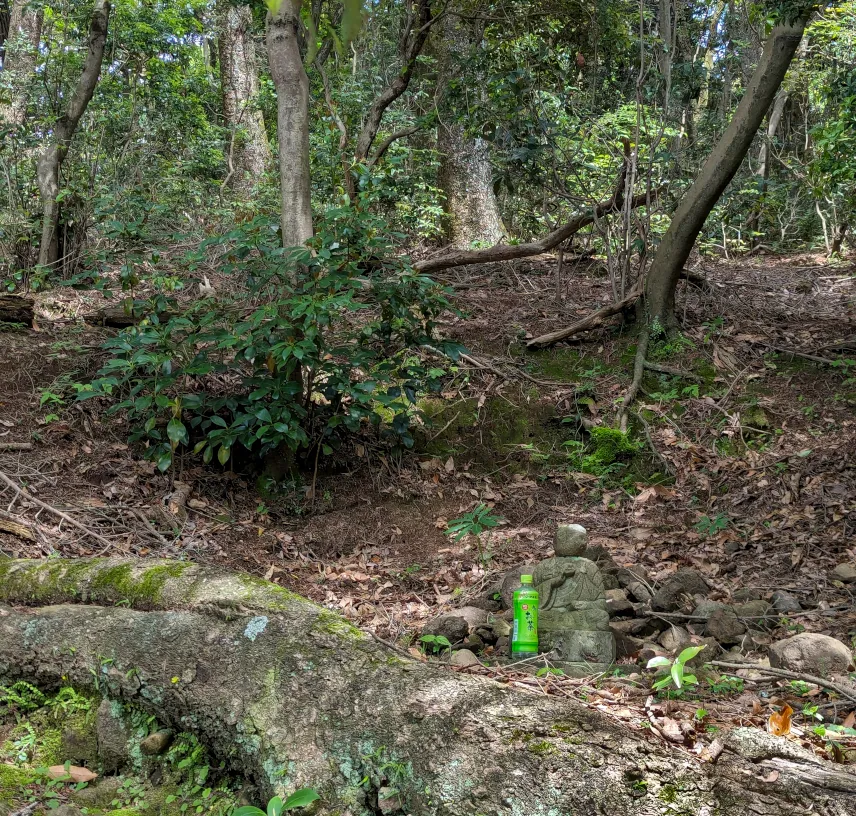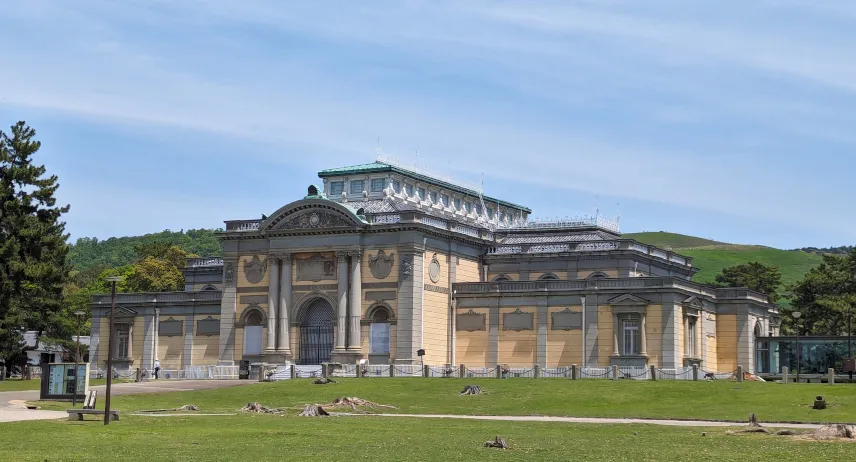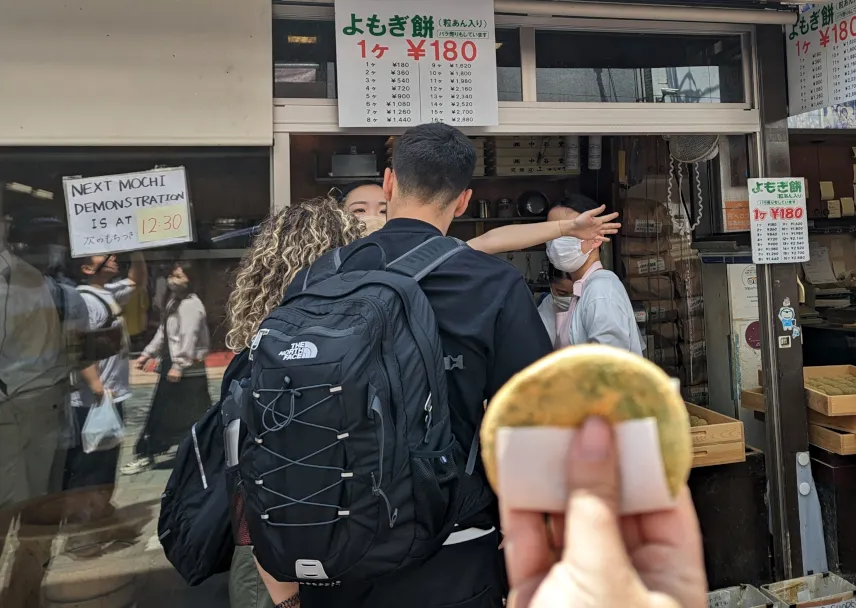
Nara Japan Half Day Itinerary (+Map)
TL;DR
You have 1 day in Nara or less, we have the perfect itinerary for you.
A day trip to Nara from Osaka or Kyoto is one of the must-dos in Japan. We loved our Nara day trip – the nature, the deer, and the history. That’s why we have written a quick Nara travel guide including
- How to get to Nara.
- What to do in Nara for a day.
- A Nara half-day itinerary to see the basics if you’re short on time.
- A Nara one-day itinerary for good measure.
- Nara Half Day Itinerary FAQ
- Nara Itinerary One Day Map
- Is Nara Worth Visiting?
- Can I Do Nara in Half a Day?
- Is it Better to Visit Nara from Osaka or Kyoto?
- What Are the Top Attractions to Visit in Nara Japan?
- And What Are the Top Attractions to Visit if You Only Have One Day in Nara?
- Is Nara Walkable?
- What Is the Best Time of Day to Go to Nara Park?
- Where to Eat in Nara
- Day Trip Nara Itineraries
Nara Half Day Itinerary FAQ
First, we start with a quick Nara half day itinerary FAQ. Feel free to skip to the itineraries.
Nara Itinerary One Day Map
Is Nara Worth Visiting?
Yes, Nara is absolutely worth a visit. It was the capital of Japan from 710 to 784 and is therefore full of history. Plus they have cute deer.

Can I Do Nara in Half a Day?
Wondering how many days in Nara do you need? You can manage to see the highlights of Nara in half a day – especially when you don’t have a limitless capacity to visit temples.
If you want to explore more temples or go on a hike, we recommend one full day in Nara.
Is it Better to Visit Nara from Osaka or Kyoto?
Honestly, you can perfectly reach Nara both from Kyoto and Osaka so it doesn’t really matter.
How to Get to Nara from Osaka
- Fastest Way: Kintetsu Nara Line 30 minutes from Osaka-Namba to Kinetsu Nara Station, 1,070 Yen.
- JR Pass: JR Nara Linie 45 minutes from Osaka Station to Nara Station, 800 Yen.
How to Get to Nara from Kyoto
- Fastest Way: Kintetsu Nara Line 35 minutes from Kyoto Station to Kinetsu Nara Station, 1,110 Yen.
- JR Pass: JR Nara Linie 45 minutes from Kyoto Station to Nara Station with the express train, 690 Yen.

What Are the Top Attractions to Visit in Nara Japan?
Nara is famous for the "Seven Great Temples of Nara" which flourished when Nara was the capital of Japan:
- Todaiji
- Kofukuji
- Saidaiji
- Yakushiji
- Horyuji
- Gangoj
- Daianji
Additionally, eight "Historic Monuments of Ancient Nara are listed as UNESCO World Heritage Sites, e.g.:
- Kasuga Taisha Shrine
- Mount Kasuga Ancient Forest
- Heijo Palace
And What Are the Top Attractions to Visit if You Only Have One Day in Nara?
If you are only on a day trip in Nara, we recommend sticking to the Nara Park area. Here are the top 10 things to do in Nara Park:
Temples and Shrines in Nara Park
1. Todai-ji Temple
This temple is both one of the Seven Great Temples of Nara and on the UNESCO World Heritage List.
Todai-ji means "Eastern Great Temple". The main hall is the largest building made entirely of wood in the world. It houses the largest Buddhist bronze statue.
Entrance fee: 800 Yen.

2. Kofuku-ji Temple
Like Todai-ji Temple, this temple is both one of the Seven Great Temples of Nara and on the UNESCO World Heritage List.
The main buildings of Kofuku-ji are
- Five-Story Pagoda
- Tokondo (Eastern Golden Hall, a 15th-century building with Buddhist statues).
- Kokuhokan (National Treasure Museum with beautiful collections of Buddhist art).
Entrance fee: National Treasure Museum - 700 Yen; Eastern Golden Hall - 300 Yen

3. Kasuga Taisha Shrine
Kasuga Taisha is Nara’s most famous Shinto shrine. It is dedicated to the deity responsible for the protection of the city of Nara.
Entrance fee: Outer areas free; inner areas - 500 Yen
4. More Temples
We quite enjoyed wandering around and exploring some more off-the-beaten-path temples. We particularly liked Nigatsu-do and the surrounding area. The view is great and the entrance is free.
We also found loads of small Buddha statues with refreshing beverages while roaming around.

Things to Do in Nara Park when You’re Templed Out
5. Sika Deer in Nara Park
Of course, the highlight of Nara Park is the Sika Deer. Many deer hang out at the entrance of the park and this is where most tourists will stop to feed them.
We also found loads of deer all around Nara Park, especially at places with many tourists like the entrance of Todai-ji Temple.
6. Yoshikien Garden
Honestly, this might have been our favourite thing to do in Nara. Yoshikien Garden is a beautiful Japanese Garden with a pond, a moss garden, and a tea ceremony house. It was surprisingly empty compared to other tourist spots in Nara Park.
Entrance fee: Free

7. Catship Museum
If you happen to be in Nara on a weekend and you like cats, how about checking out the Catship Museum as a quirky bonus to all the temples?
Entrance fee: 400 Yen

8. Wakakusa Mountain
Mount Wakakusayama is about 350 meters (1150 ft) high which allows for unobstructed views over Nara City.
The base of Wakakusayama is a 15-minute walk from Todaiji Temple. It takes about 20 minutes to reach the plateau and an additional 30 minutes to reach the peak.
Entrance fee: 150 Yen
9. Mount Kasuga Ancient Forest
Mount Kasuga Ancient Forest is a UNESCO World Heritage Site. The primaeval forest has remained virtually untouched since hunting and logging were prohibited in 841.
The Kasugayama Mountain Trail begins behind the Kasugataisha Shrine. The whole hike can be completed in a little over two hours. It loops through the forest, brings you out at the top of Mt. Wakakusa, and finishes at Mizuyachaya teahouse in the central part of the park.
10. Nara National Museum
Nara National Museum is noted for its collection of Buddhist art. It displays works of art belonging to temples and shrines in the Nara area.
Entrance fee: 700 Yen

Is Nara Walkable?
Nara is absolutely walkable if you stick to the Nara Park area.
What Is the Best Time of Day to Go to Nara Park?
We would recommend to choose either the morning or the afternoon. Around lunchtime, the deer get really sleepy and can’t be bothered to interact.

Where to Eat in Nara
You can buy snacks at various places throughout Nara Park.
For lunch, we recommend you head to Sanjo-Dori Street. It is on your way to the train station and there are loads of food options from convenience stores to restaurants.
Don’t miss the famous mochi at Nakatanidou – maybe you can even catch one of their mochi-making presentations.
For a proper meal, Tonkatsu Ganko comes highly recommended.

Day Trip Nara Itineraries
Of course, the perfect Nara day trip itinerary strongly depends on your preferences. This is why we give you plenty of options.
Nara Itinerary Half Day – The Basics
Here’s what our perfect Nara half day itinerary looks like:
If you only visit two temples, we recommend you to visit
- Kofuku-ji Temple
- Todai-ji Temple
They are both part of the Seven Great Temples of Nara and on the UNESCO World Heritage List.
Start at Kofuku-ji Temple as it is on your way from the train station to Nara Park. Afterwards, head over to Todai-ji Temple.
- Option A: If you’re still not templed out, head to Kasuga Taisha Shrine or Nigatsu-do.
- Option B: If you want to get in a quick hike, check out Wakakusa Mountain or parts of the Mount Kasuga Ancient Forest.
On your way back to the train station, don’t miss the picturesque Japanese Yoshikien Garden – we for one loved it.
- Option: If you’re a cat lover, make a pit stop at the Catship Museum.
Grab a bite at Sanjo-dori Street and try one of the famous mochi at Nakatanidou before you head back to Osaka or Kyoto.
Nara Itinerary 1 Day – For Nature Lovers
We felt that this Nara Japan day trip guide wasn’t complete without a full Nara 1 day itinerary.
Again, start a Kofuku-ji Temple and head on to Todai-ji Temple.
From here, make your way to Kasuga Taisha Shrine. Behind the shrine, the Mount Kasuga Ancient Forest trail starts. End the trail at Wakakusa Mountain with great views over the city of Nara.
On your way back to the train station, don’t miss Yoshikien Garden. If you’re a cat lover, make a pit stop at the Catship Museum.
Grab something to eat at Sanjo-dori Street and try one of the famous mochi at Nakatanidou before you head back to Osaka or Kyoto.
Voila – Your Nara day trip from Osaka or Kyoto is concluded.